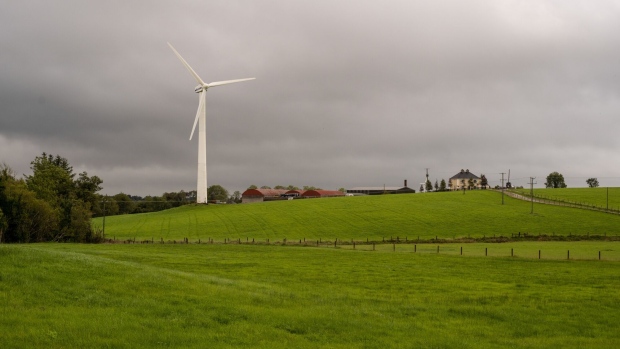Oct 2, 2023
Ireland Makes Rare Decision to Deny LNG Port for Climate Reasons
, Bloomberg News

(Bloomberg) -- Amid Europe’s angst over energy security, Ireland has made one of the boldest moves of any nation on the continent in the name of climate action: It rejected a new fossil fuel import facility.
The country’s planning authority last month refused a proposal for a liquefied natural gas import terminal on the Shannon estuary and a related gas-fired power plant, after taking into consideration policies outlined in Ireland’s energy and climate action plan. The strategy calls for the country to reduce greenhouse gas emissions annually by 7% on average between 2021 and 2030.
“It is considered that the development at this time would be contrary to current government policy,” according to the board decision.
Ireland is “probably the first” country to deny an LNG facility based “on climate, as opposed to local environmental opposition,” according to Jonathan Stern, distinguished research fellow at the Oxford Institute for Energy Studies. The decision comes ahead of the country’s review of its energy security in the coming weeks.
Minister for the Environment Eamon Ryan told national broadcaster RTE the review could recommend some form of LNG but it would be “strategic” and not commercial.
Unlike the rest of Europe, Ireland appears to be pushing ahead with its zero carbon transition policy, despite energy shocks last year that left most European countries scrambling for more, not less, LNG. Germany installed three floating LNG facilities in a matter of months, and more are planned. France made a U-turn on LNG in the wake of Russia’s war in Ukraine, and went from scrapping a US LNG supply deal to eventually signing it. The UK in September announced it’s stepping back from some of its most aggressive net zero targets.
US LNG developer New Fortress Energy Inc. had sought to build a floating terminal in Ireland for LNG imports, which would supply a 600MW power generation plant. There were early signs that it would have a tough time getting approved.
Speaking in Ireland’s parliament in April, Ryan indicated that the government’s policy is to move away from natural gas — especially if it’s been produced via hydraulic fracking, meaning “it would not be appropriate for Ireland to permit or proceed with the development of any LNG terminals.”
Still, Ryan has recently stressed natural gas will not be immediately taken off the grid. The minister said it has a “ back-up role” in the energy system as Ireland works to meet most of its energy needs from renewables.
The dilemma for Ireland is its relative isolation from the rest of European energy markets. The nation receives gas from the domestic Corrib gas field, as well as via two subsea interconnectors with the UK, and its consumption has been rising in recent years. In September 2022, a review on security of energy supply proposed a floating storage and regasification unit that could help ease a potential energy crunch.
Gas storage facilities have also been mooted as options to ensure energy security in Ireland amid concerns following the war in Ukraine and rising commodity costs. Two years ago, Ireland’s electricity grid warned it might run low on energy during the winter periods over the next five years. This makes the refusal of an extra gas import facility a brave move.
Stern said all eyes will be on the country’s renewable strategy now. Ireland expects to increase its current onshore wind energy capacity of 4.59GW, as of end of August, to 6GW by 2025. Ireland is aiming for a variety of clean power sources to meet 80% of its energy needs by 2030. Currently renewable energy represents about 37% of the fuel mix on the grid.
“It will be interesting to see what they intend to do in terms of supply in future and, if [they reach] 100% renewables, how they intend to deal with the intermittency,” Stern said.
©2023 Bloomberg L.P.


